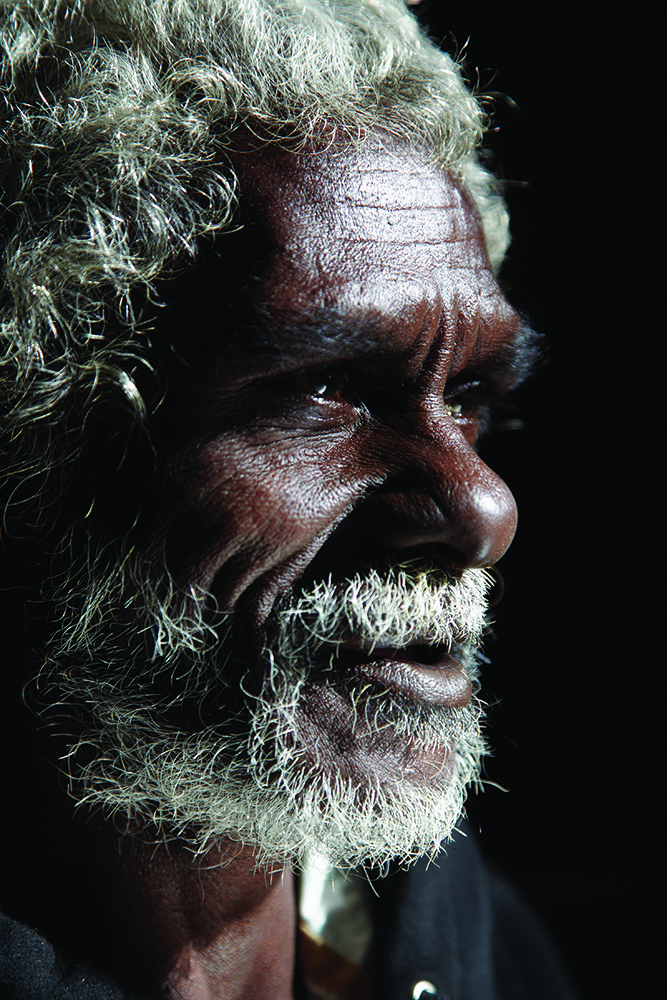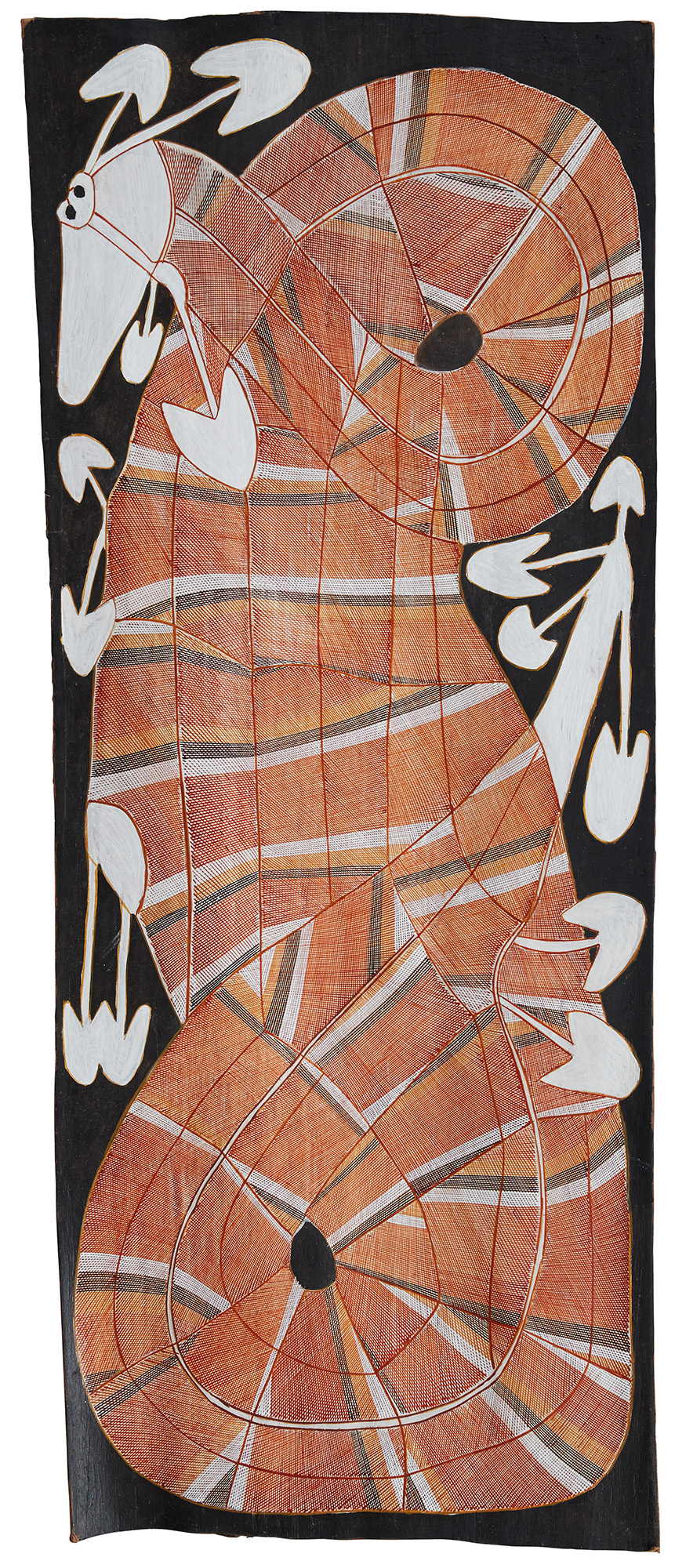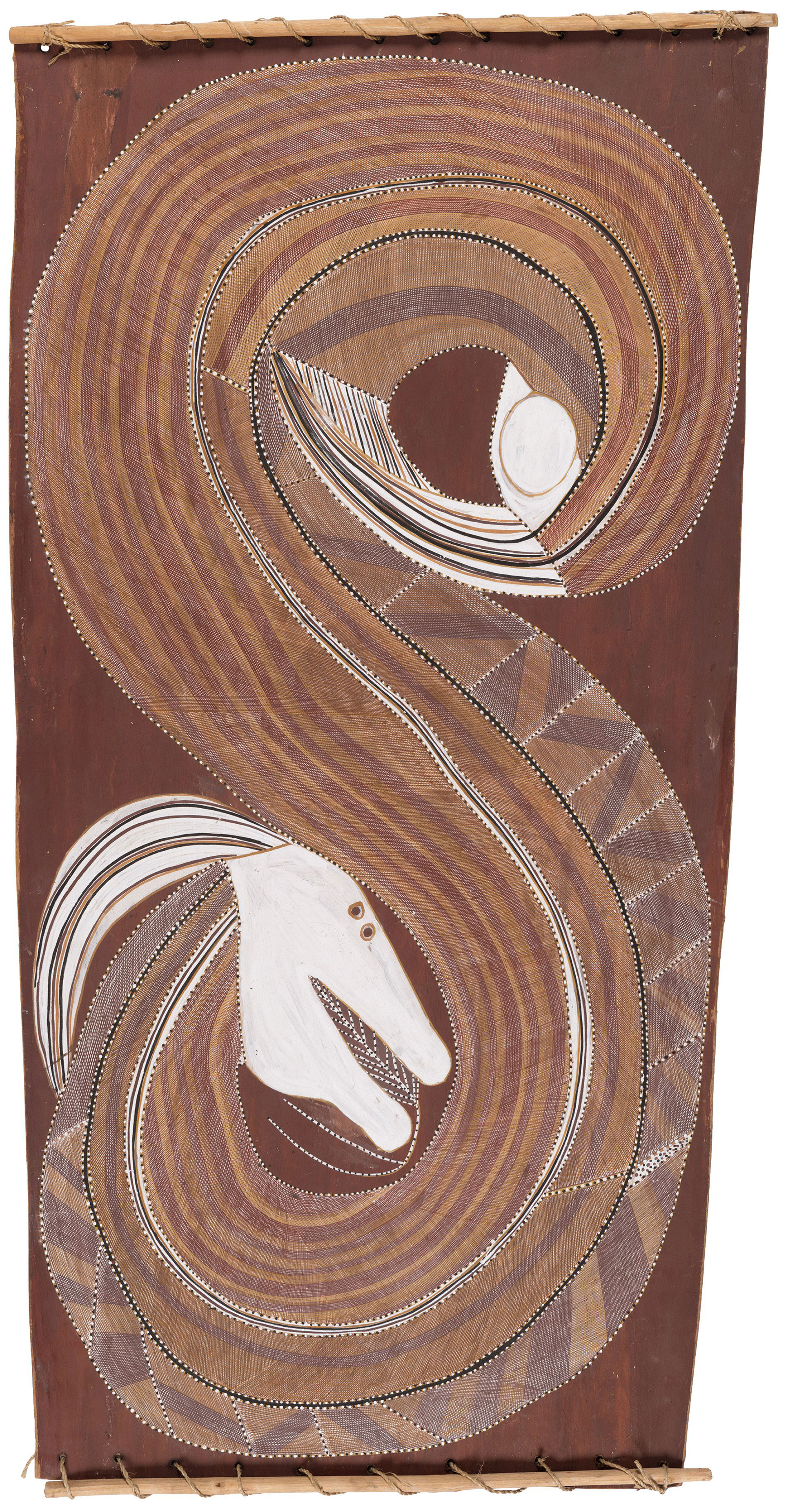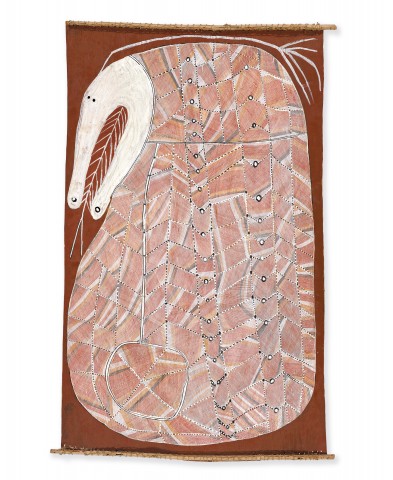NGALYOD, RAINBOW SERPENT, 1999
JOHN MAWURNDJUL
natural earth pigments on eucalyptus bark
153.0 x 90.0 cm (irregular)
bears inscription on label verso: artist's name, language, location and Maningrida Arts and Culture cat. 20321 1999 BP
Maningrida Arts and Culture, Maningrida, Northern Territory (label attached verso)
Gallery Gabrielle Pizzi, Melbourne (label attached verso)
Private collection, Brisbane, acquired from the above in 2002
Kabarlekidyo to Milmilngkan: John Mawurndjul's Country, Gallery Gabrielle Pizzi, Melbourne, 30 October – 23 November 2002 (illus. on front cover of exhibition invitation)
rarrk - John Mawurndjul, Journey Through Time in Northern Australia, Museum Tinguely, Basel, 21 September 2005 – 29 January 2006; Sprengel Museum, Hanover, 19 February – 5 June 2006
Kaufmann, C., et al., rarrk – John Mawurndjul: Journey Through Time in Northern Australia, Crawford House Publishing Australia, Belair, South Australia, 2005, pp. 129 (illus.), 228
230056.jpg

‘My head is full up with ideas.’1
Original and uniquely Australian, the art of John Mawurndjul is the culmination of decades of learning and the fine tuning of his craft over time, resulting in a distinct record of country and an individual style of storytelling subtly contained within his intricate and beautiful paintings on bark.
Since he first began painting in the late 1970s, Mawurndjul has quietly transformed Kuningku bark painting. His early works of figures and creatures in Kuningku mythology evolved into a more metaphysical representation of specific sites, events and landscape that serve as a link between the spiritual and human worlds. However, it is in his renditions of Ngalyod, The Rainbow Serpent that this evolution is most evident. An omnipotent and significant creature in Kuninjku cosmology, Ngalyod is associated with the creation of all sacred sites, djang, in Kuninjku clan lands.
‘I always thought about Ngalyod and how to paint it… In [early] pictures I use dot infill like the old people, but now I have changed, I have my own style, my own ideas, you don’t see dot infill anymore… I went and painted bigger barks… Ngalyod is very powerful and dangerous... I paint her from my thoughts.’2
Ngalyod appears as a subject in his early paintings but as Mawurndjul’s knowledge grows through the guidance of his late elder brother Jimmy Njiminjuma and his participation in ritual ceremonies, his work reflects the more transformative power of Ngalyod. His paintings become representative of the destructive potential of this being and ‘many of his works, particularly the Ngalyod paintings, act as definitive warnings to family, friends and visitors alike, illustrating the vengeful capacity of beings to punish transgressors or those who do not have ritual authority.’3
230056 (3).jpg

‘Rainbow Serpents are found in many places in both dua and yirridjdja moiety. They live in the earth under the ground or in bodies of water at places such as Dilebang or Benedjangngarlwend. The white clay in the ground at Kudjarnngal is the faeces of the serpent. Waterlilies at certain places tell us that the Rainbow Serpent lives there. When the wet season storms come, we can see her in the sky (as a Rainbow). She makes the rain. When we the floodwaters of the wet season rise, we say the Rainbow Serpent is making the electrical storms of the monsoon wet season. Rainbow Serpents are dangerous, just like crocodiles, they can kill people and other animals.’4
As Mawurndjul relates above, Ngalyod resides in the waterholes and water courses. Waterlilies growing around their edges may indicate the presence of Naglyod and Kuninjku are careful not damage the lilies or disturb the still bodies of water so not to anger the spirit. The Power of Nagalyod is evident in Ngalyod, Rainbow Serpent, 1999, the profile of the serpent’s head is clearly distinguished in vivid white clay to the top left of the bark, its teeth reduced to a series of chevrons, the head bordered by shimmering fields of ochre rarrk that spreads out to the corners. Energy radiates from the painting, indicating the presence and potential power within that is both life giving with the rejuvenating rains of the annual monsoon and at the same time threatening with the destructive power of storms.
230056 (2).jpg

Mawurndjul’s paintings have pioneered a new interpretation of Kuningku clan sites and djang that inspire the next generation of bark painters. Constantly striving for new ways to interpret his country, Mawurndjul’s innovative use of rarrk to map important locations is evident in the fine lineal clan designs spread across the surface of his paintings, creating shifting patterns of grids that are rendered in fine interlocking lines. As Hetti Perkins writes ‘His works, lovingly crafted and sculpted depictions of flora and fauna, ancestral events, supernatural beings, significant sites and encrypted ceremonial designs are at once country and mnemonic of country.’5
1. The artist quoted in John Mawurndjul, I am the Old and the New, Museum of Contemporary Art, Sydney, 2018, p. 336
2. The artist in an interview with Apolline Kohen in Kaufmann, C., et al., rarrk – John Mawurndjul: Journey Through Time in Northern Australia, Crawford House Publishing Australia, Belair, South Australia, 2005, pp. 25 – 26
3. Perkins H., ‘Mardayin Maestro’ in John Mawurndjul, I am the Old and the New, op. cit., 2018, p. 26
4. The artist quoted in John Mawurndjul, ibid., p. 200
5. Perkins, op. cit., p. 21
CRISPIN GUTTERIDGE
